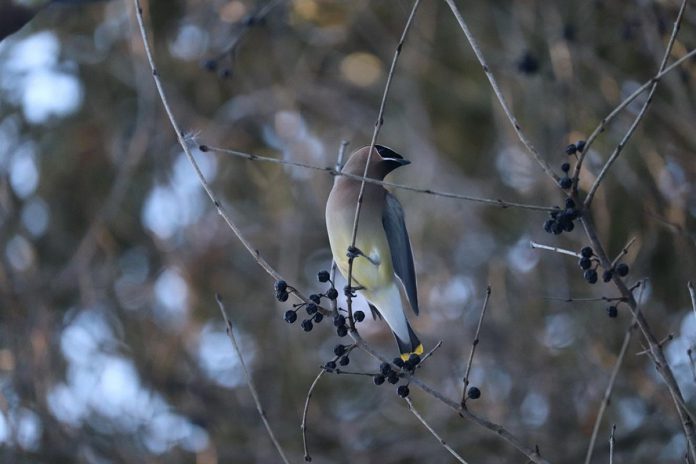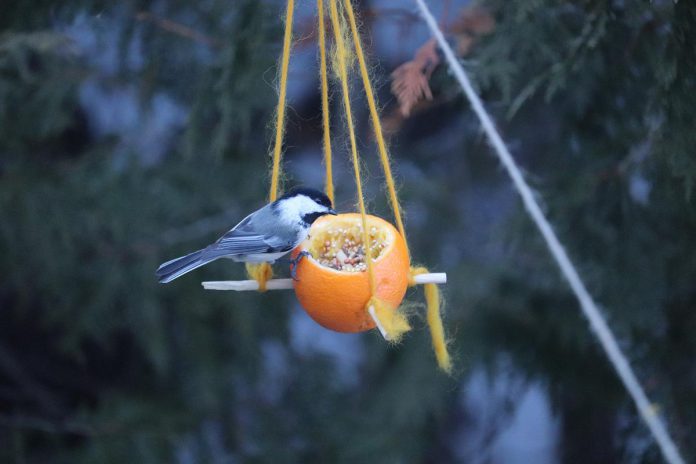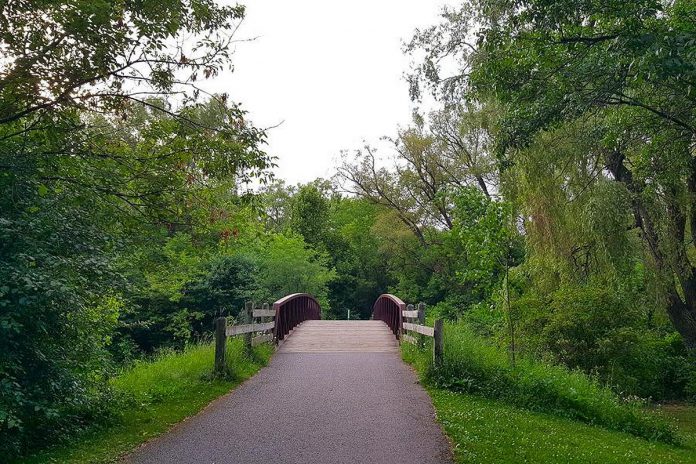
Research tells us that there are so many ways that nature can benefit us. A 2017 study from the University of Essex has shown that spending time in nature can help improve our mental health. In 2013, a study from the University of Canterbury and the University of Otago in New Zealand suggested that being exposed to green space in urban environments can improve our mood, focus, and productivity.
Exposure to nature can not only contribute to our mental well-being, but our physical well-being. Being outside reduces our blood pressure, heart rate, muscle tension, and production of stress hormones, according to Marianne Kingsley from EcoHealth Ontario in a 2019 commentary from the Public Health Agency of Canada.
It’s evident: surrounding ourselves with natural green spaces can help our overall well-being, in all seasons. During the winter season, we invite you to explore what it means to let nature nurture you by venturing outside. Here are four nearby nature spots to check out while you wait for the spring thaw.
1. Jackson Park

Visit Jackson Park and explore all that it has to offer. The park has a 4.5-kilometre multi-use trail that offers a variety of recreational activities including walking, rolling, cycling, and cross-country skiing in the winter.
Peterborough is one of only eight identified urban areas in Ontario with an old-growth forest. The Jackson Creek Old-Growth Forest is home to a variety of mature white cedar, white pine, and eastern hemlock trees. Some are as old as 250 years old. The old-growth forest extends from the Monaghan Road parking lot into the shores of Jackson Creek.
Feed the birds throughout the winter by making a homemade bird feeder out of an orange, some twine, and wooden toothpicks like those spotted hanging at Jackson Park. The chickadees will quickly discover these feeders and munch away in joy!
2. Mark S. Burnham Provincial Park

Mark S. Burnham Provincial Park is a small day-use park located off Highway 7. The park protects a Peterborough drumlin field that contains glacial remnants.
At Mark S. Burnham, there is a trail that can be followed through the forest. The trail has two loops, one shorter (about one kilometre) relatively flat loop and a larger loop (1.4 kilometres) that involves some incline. You will be pleased to find there are many informative signs along the trail about the surrounding landscape and vegetation.
This park also has an old-growth forest that is home to some of the oldest maple, beech, elm, and hemlock trees in Ontario (over 200 years old). Take your time to look up into the branches.
At Mark S. Burnham, you can look forward to the spring melt. As you walk the trails in the early spring, you are bound to see some trilliums blooming.
3. Ecology Park

GreenUP Ecology Park is a hidden gem located at 1899 Ashburnham Drive beside Beavermead Park. No matter the season, this five-acre naturalized park boasts rare tree species, a walk by the water, and wildlife encounters.
If you are driving to Ecology Park, park in the Beavermead Park lot and follow the path and signage into Ecology Park. The park is a gateway to many other trails, such as the Trans Canada Trail.
Going to this park offers something for everyone. Sit by the creek and listen to the sound of the water pass by. Listening to the sound of water can help calm our nerves and relieve feelings of stress.
Ecology Park is a particularly fun park for families to visit, as there are many opportunities for outdoor natural play.
4. Your own neighbourhood

All in all, you don’t need to go far to enjoy the winter outdoors. Camp Kawartha suggests that, by engaging in outdoor activity with our family — for example, on a walk outside our home — we help kids forge a real and lasting connection with the outdoors.
Play a colour match game on your next walk. All you need are some colour sample sheets or coloured objects around the house. While walking outdoors, match the colour samples to the colours you see in nature. You won’t have to go far to discover lots of colour matches and amidst the beauty that nature offers us.
Remember, be sure not to litter when exploring your neighbourhood green spaces. You could even plan to pick litter up along your walk and pack it out. We are lucky to have beautiful nature spots to visit, and this is one small way we can respect and care for them.
As you walk this winter, take a few extra moments to become aware of your surroundings when you are exploring. Be mindful of the smells, the noises, and the colours. Listen to the birds chirp while you find animal tracks in the snow. Breathe in that fresh air. Let nature nurture you.


























